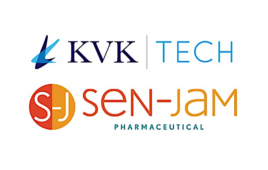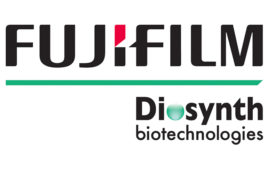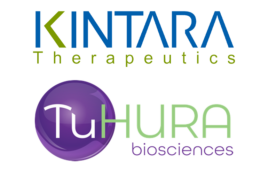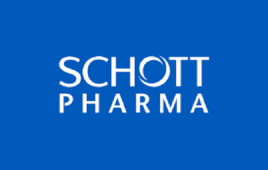Industry leaders provide feedback on serialization and anti-counterfeiting—shining light on where pharma is headed as well as the industry’s greatest vulnerabilities.
How beneficial will pharmaceutical serialization be to manufacturers and patients? With serialization now set to impact the industry in the form of a key component of the Drug Supply Chain Security Act (DSCSA), its potential value is worth exploring in detail. The prime motivation behind serialization—to help protect patients from exposure to drugs that may be counterfeit, stolen, contaminated, or otherwise harmful—is clearly of critical importance. Any system designed to improve the detection and removal of potentially dangerous drugs from the drug supply chain is worthwhile.
What has been missing to date from the serialization initiative, however, are the personal perspectives and opinions of those on the front lines: the executives and other leaders in the pharmaceutical industry who will be in charge of putting it into practice. In a recent survey, the rosy picture painted by the backers of serialization is tempered somewhat, revealing a landscape of expectations that are decidedly more mixed. The survey results provide a useful set of insights for everyone involved in this enterprise.
The Serialization Mandate
The Drug Quality and Security Act (DQSA) was signed into law by President Obama on November 27, 2013. Title II of DQSA, the Drug Supply Chain Security Act (DSCSA), outlines critical steps to build an electronic, interoperable system over a period of 10 years to identify and trace certain prescription drugs as they are distributed in the United States.1
Phase One, which began January 1, 2015, requires pharmaceutical supply chain participants to share lot-level transaction information, transaction history, and transaction statements at each sale/transfer of ownership.2
Phase Two of the DSCSA, due to be implemented no later than November 27, 2017, will require that manufacturers serialize all product with a unique serialized identifier at the saleable unit level. Each item must be treated as a unique serialized entity that can be tracked individually.3 Specifically, pharmaceuticals must be marked with a National Drug Code, serial number, lot number, and expiration date in both machine-readable and human-readable format, i.e., the use of GS1 Identification Numbers, Application Identifiers, and Data Carriers (barcodes and RFID tags).4
Phase Three of the DSCSA requires trading partners to share chain-of-ownership data in a manner that allows for serialized item traceability back to the origin (usually the manufacturer).

Gauging the Opinions of Industry Leaders
A 10-question survey about serialization and anti-counterfeiting in the pharmaceutical industry was presented to participants at the Pharmaceutical Traceability Forum held in Philadelphia, PA in November/December 2016. The 26 respondents (out of 100 questionnaires distributed) were key executives and leaders involved in serialization, anti-counterfeiting, and packaging initiatives. This sample size is a representation of a small ecosystem that is a highly specialized group of a few hundred in all of the pharmaceutical industry.
The key findings of the survey included:
- Serialization is not inspiring unmitigated enthusiasm. There was a surprisingly less-than-enthusiastic response about the value of serialization as a tool to help protect patients. Only 12 percent of survey respondents agree that “Serialization is going well and will be useful when completed” and only 41 percent agree that “Serialization is challenging to complete and will likely be useful when completed.”
- Serialization alone is not seen as enough to protect patients. Eighty-five percent of survey respondents agree that more needs to be done to protect patients and 63 percent agree that counterfeiters are getting better at copying packaging. Thirty-six percent agree combining multiple technologies is the most important tool to reduce risk of counterfeits while 16 percent agree that serialization is going fine but is not going to be enough to prevent counterfeits in the market.
- Packaging is vulnerable. Sixty-five percent of respondents believe that counterfeiters are getting better at integrating anti-counterfeiting technology into counterfeits and 63 percent agree that counterfeiters are getting better at copying packaging.

Key Takeaways from the Survey Responses
Given the tenor of sentiment expressed by the survey respondents, what insights should those throughout the industry glean? There are three obvious takeaways:
- Despite some concerns, serialization is still important… A total of 88 percent of respondents either agreed or strongly agreed with the statement, “Serialization is important for ensuring the safety of pharmaceutical products in the supply chain.” There is, therefore, a perception that serialization can play at least some role in improving security within the industry.
- … but serialization is not enough on its own. The survey results also clearly indicate that in and of itself, serialization is likely to fall short of the overall goal of keeping the pharmaceutical supply chain free and clear of counterfeit drugs. There is a widespread sentiment that at the very least, serialization must be combined with other strategies to have greater security in the supply chain.
- Assessment of additional measures must be made. Although the survey did not solicit opinions from respondents on what specific extra measures could entail, benefits have been shown—e.g., by the use of molecular tags that cannot be copied (unlike barcodes); that can be created for each company and product; and that are traceable at molecular levels, among myriad other advantages. The U.S. Food and Drug Administration in its 2011 Guidance refers to these as Physical- Chemical Identifiers (PCID).5
With the era of serialization now underway, it is wise for the pharmaceutical industry to assess what it likely can and cannot be expected to accomplish. While the motivations behind serialization are clear—and it certainly can play a role in helping battle counterfeits in the supply chain—we ought not to consider it as the be-all and end-all in this battle to improve patient safety and consumer confidence in the global pharmaceutical supply chain. We must seek to combine it with other technologies that have proven benefits in keeping patients safe.
About the Author
Bob Miglani is Chief of Business Development at Applied DNA Sciences, a firm that provides biotechnology-driven solutions to help protect companies, governments and consumers from theft, counterfeiting, fraud and diversion.
References
- U.S. Food & Drug Administration. “Drug Supply Chain Security Act (DSCSA).” Available at: https://www.fda.gov/Drugs/DrugSafety/DrugIntegrityandSupplyChainSecurity/DrugSupplyChainSecurityAct/
- U.S. Food and Drug Administration. “Are You Ready for the Drug Supply Chain Security Act?” Available at: https://www.fda.gov/Drugs/DrugSafety/DrugIntegrityandSupplyChainSecurity/DrugSupplyChainSecurityAct/ucm427033.htm
- Supply Chain Digest. “Drug Supply Chain Security Act: Is Your Warehouse Ready for Item-Level Serialization?” Available at: http://www.scdigest.com/experts/Acsis_16-11-03.php?cid=11485
- Regulatory Affairs Professionals Society. “Companies Collaborate on DSCSA Guideline as Deadlines Approach.” Available at: http://www.raps.org/Regulatory-Focus/News/2016/11/22/26228/Companies-Collaborate-on-DSCSA-Guideline-as-Deadlines-Approach/
- U.S. Food and Drug Administration. “Guidance for Industry: Incorporation of Physical-Chemical Identifiers into Solid Oral Dosage Form Drug Products for Anticounterfeiting.” Available at: https://www.fda.gov/downloads/Drugs/…/Guidances/UCM171575.pdf
This feature story can also be found in the September/October 2017 issue of Pharmaceutical Processing.
Follow Pharmaceutical Processing on Twitter, Facebook, and LinkedIn and subscribe to our YouTube channel for updates on the latest pharmaceutical and biopharmaceutical manufacturing news!




